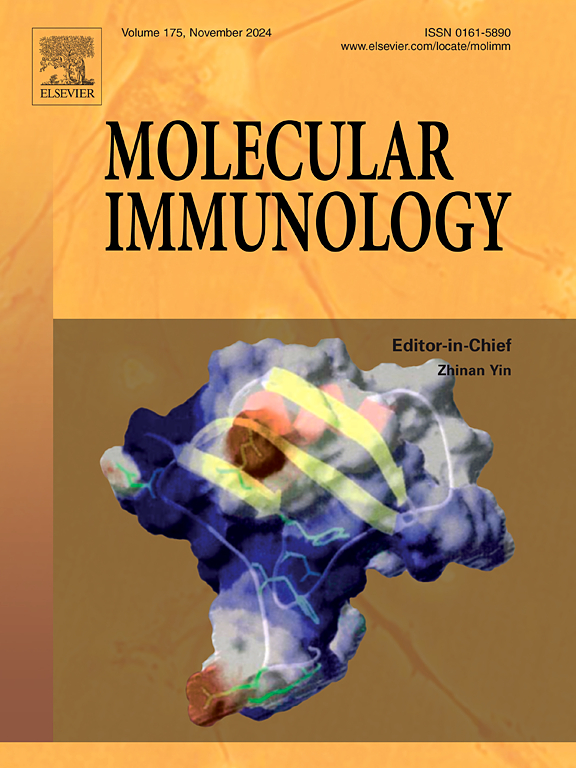Anti-inflammatory properties of Pleione bulbocodioides extract through STING/ NF-κB pathway inhibition
IF 3.2
3区 医学
Q2 BIOCHEMISTRY & MOLECULAR BIOLOGY
引用次数: 0
Abstract
The members of Pleione (Orchidaceae) are popular worldwide for their ornamental appeal and medicinal properties. Pleione bulbocodioides, a CITES Appendix II-listed species, has been traditionally used in dermatological therapies but remains pharmacologically understudied. In this study, the in vitro anti-inflammatory effects of extracts from artificially cultivated P. bulbocodioides were investigated. We found the P. bulbocodioides extract (PE) significantly suppressed TNF-α/IFN-γ-induced expression of IL-6, IL-1β, CCL5, CCL8, CXCL8, CXCL3, and TMEM173 (STING) genes in both HaCaT cells and NHEKs. Transcriptomic analysis and Western blotting confirmed the inhibitory effects on STING/NF-κB signaling pathway of PE. And phytochemical characterization identified militarine and batatasin III as principal bioactive constituents responsible for STING/NF-κB pathway inhibition by PE. PE also demonstrated comparable anti-inflammatory efficacy in LPS-induced RAW 264.7 macrophages and SLS-irritated 3D reconstructed human epidermis. Thus, these findings indicate the potential of PE as a natural anti-inflammatory therapeutic or skincare ingredient for dermatological applications.
苦参提取物抑制STING/ NF-κB通路的抗炎作用
凤仙花(兰科)的成员因其观赏和药用价值而在世界范围内广受欢迎。白头松属CITES附录ii物种,传统上用于皮肤病治疗,但药理学研究仍不足。在本研究中,研究了人工培养的球芽草提取物的体外抗炎作用。我们发现球泡草提取物(PE)显著抑制TNF-α/IFN-γ诱导的IL-6、IL-1β、CCL5、CCL8、CXCL8、CXCL3和TMEM173 (STING)基因在HaCaT细胞和NHEKs中的表达。转录组学分析和Western blotting证实了PE对STING/NF-κB信号通路的抑制作用。植物化学鉴定鉴定,PE抑制STING/NF-κB通路的主要生物活性成分为militine和batatasin III。PE对lps诱导的RAW 264.7巨噬细胞和sls刺激的3D重建人表皮也显示出相当的抗炎作用。因此,这些发现表明PE作为一种天然抗炎治疗或皮肤护理成分的潜力。
本文章由计算机程序翻译,如有差异,请以英文原文为准。
求助全文
约1分钟内获得全文
求助全文
来源期刊

Molecular immunology
医学-免疫学
CiteScore
6.90
自引率
2.80%
发文量
324
审稿时长
50 days
期刊介绍:
Molecular Immunology publishes original articles, reviews and commentaries on all areas of immunology, with a particular focus on description of cellular, biochemical or genetic mechanisms underlying immunological phenomena. Studies on all model organisms, from invertebrates to humans, are suitable. Examples include, but are not restricted to:
Infection, autoimmunity, transplantation, immunodeficiencies, inflammation and tumor immunology
Mechanisms of induction, regulation and termination of innate and adaptive immunity
Intercellular communication, cooperation and regulation
Intracellular mechanisms of immunity (endocytosis, protein trafficking, pathogen recognition, antigen presentation, etc)
Mechanisms of action of the cells and molecules of the immune system
Structural analysis
Development of the immune system
Comparative immunology and evolution of the immune system
"Omics" studies and bioinformatics
Vaccines, biotechnology and therapeutic manipulation of the immune system (therapeutic antibodies, cytokines, cellular therapies, etc)
Technical developments.
 求助内容:
求助内容: 应助结果提醒方式:
应助结果提醒方式:


